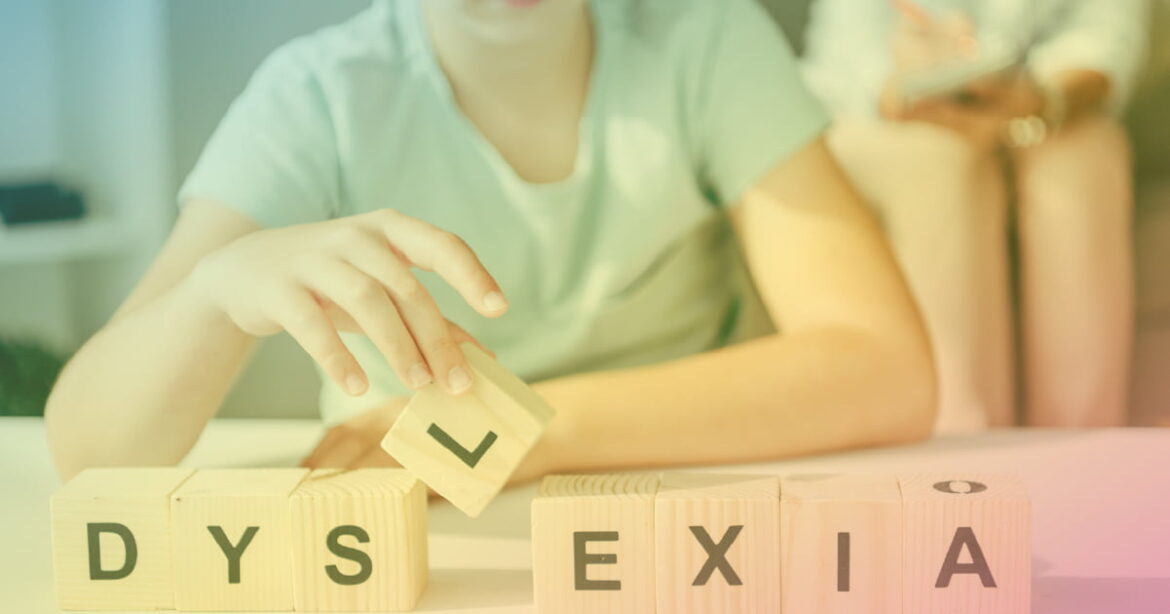
Parents often approach us with concerns that their child may be dyslexic.
So is dyslexia growing at an alarming rate, or is there another explanation? We believe the later.
You may not be aware that research into reading acquisition shows that, irrespective of the instructional methods used by teachers, some 60% of children will learn how to read. So this means, that irrespective of the teaching methods utilised by their teacher, around 60% of students work out for themselves the nature of the alphabetic principle, how to access phonemes, how to process a sequence of phonemes into co-articulated utterances, and more.
This 60% statistic enables schools to claim a majority success in teaching children to read, and the remaining 40% are noted as having some kind of learning difficulty. This is simply not true, and the failure rate of children learning to read at school can be attributed to the instructional inadequacy of the teaching method.
Dyslexia has become an easy label to assign to any child struggling with reading acquisition, while ignoring the root cause.
Some years ago, I worked for the Ministry of Education in Singapore as a Senior Educational Psychologist. Our work creating the I Can Read System had been completed, but we had not yet released the product into the educational market. Many children in Singapore attending elementary or primary school could not read. It was a puzzle, given that most non-readers were of at least average intelligence, and there was no apparent culprit that stood out as the cause of these poor levels of literacy. It was the time of my doctoral studies and my supervisor Professor Brian Byrne was visiting from the University of New England. Professor Byrne wrote The Alphabetic Principle and was right up to speed on the bottom-up approach to reading acquisition, starting with phonemic awareness.
We were both quite surprised at the extent of poor literacy in the local schools. I knew that it was unlikely that more than 3-5% of these students would be dyslexic, so it was a puzzle as to why so many had not learned how to read properly.
First a word about dyslexia.

TRUE DYSLEXIA IS QUITE RARE!
True developmental dyslexia is quite rare. A ‘truly’ dyslexic child resists even the best reading instructional attempts to remediate the condition and the condition has been shown to have strong organic associations both genetically and within the operations of the brain. The current estimate is that up to 5% of children may be in this category. The truth is that no one really knows.
Although we identified 20-40% of children in Singapore schools presenting with reading weaknesses, the fact is that most were not developmentally dyslexic and could respond positively to correct reading instruction. Herein lies the key to the problem of acquired reading difficulties: poor, ineffective teaching methodologies.
Singapore aside, acquired reading difficulties exist in nearly every English-speaking country where children are expected to know how to read, including Australia, and the cause is simply poor, ineffective teaching methodologies. Traditionally, children acquire the skill of learning how to read by passing through a pre-school process such as kindergarten, or they may be home-schooled in their early years and receive misguided instructions from parents or care givers.
We can list a number of such instructional approaches but most of them have a few things in common. These variables are the hidden culprits. What they have in common is that rather than rely on cognitive processing, they are memory-dependent. Teachers commonly start their instructions by drawing attention to the alphabet. They write the letters on a board, a,b,c… and the child often learns the names of the letters before anything else. Later the child may be shown a picture of a cat. The child may say the word /cat/ and be told that the word /cat/ starts with the letter c /see/. Overall, the child is taught the alphabet and is expected to memorise it. This is very common. We have all heard teachers say, “Ay for apple!”
However, there is no relationship between the first sound in the word /cat/, and the letter /see/. What this boils down to is that the child learns a whole language-based recall of previously sighted words. Just take flash cards which juxtapose a picture with a word. The child sees these enough times, and should the child have a strong visual memory, he or she will, in all likelihood, acquire a sight vocabulary of up to 2000 words. If a memory-dependent methodology is utilised by the child successfully, it is highly likely that the child may end up with no way of decoding unfamiliar words, words previously unseen and therefore un-memorised.
A child may look at the word ‘cat’ and say, “See, ay, tee” over and over, but sadly will never be able to produce the word ‘cat’ from this combination of letter names. Or another child (who may have memorised ‘cat’ as a sight word) may look at a nonsense word such as ‘dap’, and by saying “Dee, ay, pee,” will never be able to coarticulate the letters in the word to pronounce the word correctly, without knowing that the word is a combination of sounds (represented by letters) rather than letter names.
Some twenty years ago, most western education systems woke up to the effectiveness of ‘phonics training’, although sadly many failed to understand how phonics training should work. Instead of showing the child a picture of a /cat/ (example) and telling the child that the scribble below ‘says’ cat, teachers showed the child a picture of a cat and told the child that cat has three sounds /cuh-ah-tuh/ so don’t forget that (i.e., remember). Teachers have been famously caught starting ‘phonics training’ by writing the letter ‘a’ on a board and telling the child that this letter says the sound /ah/ and so on, except that it isn’t true. Letters do not make or say sounds. Letters represent sounds (are pictures or drawings of sounds). We make the sounds!
By now you might have gathered that the traditional method for learning to read was and is in many places, based on the ability to remember (for example) that the letter ‘a’ says the sound /ah/. It doesn’t!
The word /have/ does have the sound /ah/ but the word /gate/ does not. Nor do the words /was/, /path/, /any/, /ago/ (and there are more). This is where it all starts to go wrong for the child endowed with a weaker visual memory who applies the memory-dependent lessons into his approach to reading. Cumulatively, children taught to read through a memory-dependent sight-based methodology may work out for themselves the relationship between the spoken word and the ear’s ability to access its sounds and then attach the sound to its common visual representation. If they have (innate) phonemic awareness, the brain - having learned the language/words - they may be able to separate and access the sounds making up a word. Having accessed the sounds without being told the sounds, the next step required is the ability to process the sequence making up the word. It might sound a bit technical, and our opinion is that many children with acquired reading weaknesses are likely to have been taught by teachers who themselves, through no fault of their own, are poorly trained in teaching reading. Thus, these children may be experiencing what we call ‘acquired dyslexia’.
Enrolling your child with a specialist reading centre, such as I Can Read in preparation for starting school, will give them the best chance of reading success and equip them with skills they need to overcome the current ineffective teaching methods they will encounter. However, it is important to continue with their specialist reading education if possible, once they do start school to avoid losing the advantage they have gained.
Having established their child’s early learning, parents often fall into the trap of ceasing this specialist education at the start of Kindergarten. It is their reasonable belief that this external education it is no longer required, but in reality, find their child succumbing to ‘acquired dyslexia’ as a result of having to adapt to the education system’s memory-based learning.
Parents choosing to cease specialist learning at school age may find it useful to return to their reading centre periodically for an assessment to ensure their child is not falling behind.
Some children are better able to adapt than others, but at least being aware will be helpful in monitoring their progress.
The I Can Read system has taught over 300,000 children to read, including those with learning difficulties and some with dyslexia. In our experience, every child can learn to read with the right methodology, and any difficulties you do encounter, is likely not due to dyslexia.
Tony Earnshaw | Co-founder and Educational Psychologist, I CAN READ
If you would like more information on reading acquisition, are concerned about your child’s reading progress, or would like to book a FREE assessment, please contact the I Can Read head office at Dee Why on 02 9972 1419 or